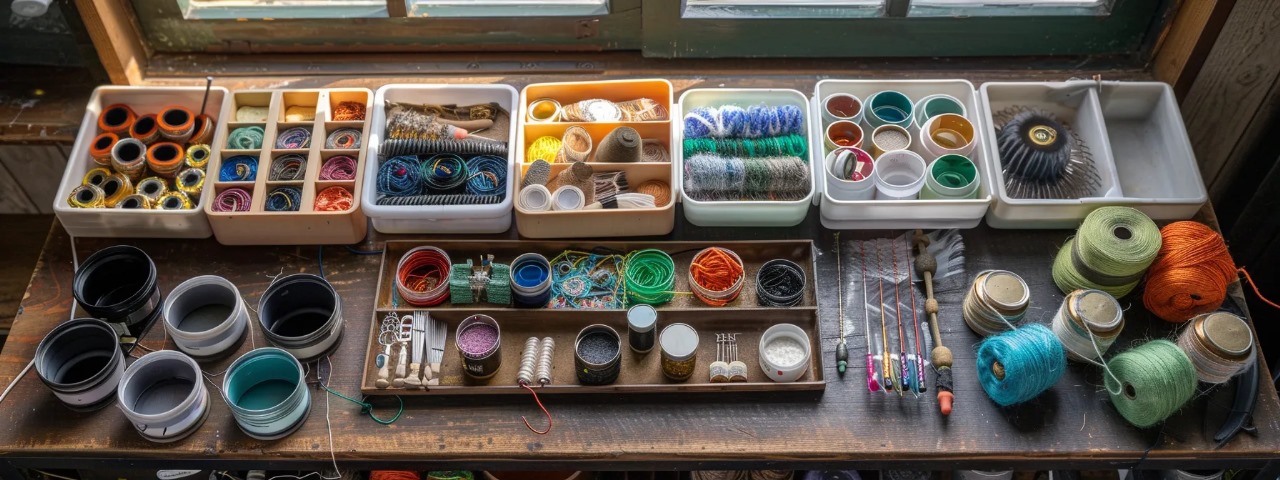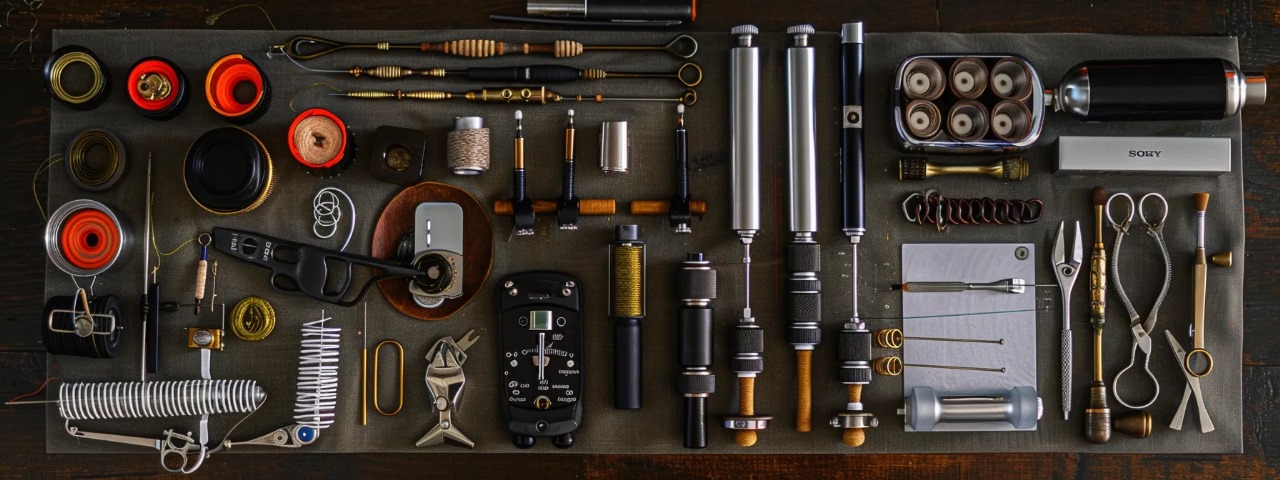Fly tying is a satisfying and intricate craft that blends the love of fishing with the satisfaction of creating something with your own hands. It can take anglers to a new level of personal achievement and connection with the sport. Whether you’re a beginner or looking to refine your skills, finding the perfect fly tying kit is essential. In this article, we’ll explore the tools, materials, and knowledge you need to begin your journey into the art of fly tying.
Mastering the Art of Fly Tying: Essential Tools for Beginners
When venturing into the world of fly tying, the right tools are your foundation. Beginners should seek out a kit that includes basic items such as scissors, hackle pliers, a bobbin, and a whip finisher. These tools are pivotal for precision work, from cutting materials to winding thread securely around the hook.
The quality of these tools can greatly affect your tying experience. It’s important to choose implements made of durable materials, ensuring longevity and reliability. Although it might be tempting to go for the cheapest options, investing in mid-range tools can improve your outcomes and make the learning process smoother.
For those starting out, a fly tying kit can be an effective way to ensure all the essential tools are included. Kits usually come with instructions or recommendations for beginners, which can help newcomers avoid common pitfalls and build skills progressively.
Understanding Fly Materials: Natural vs. Synthetic

The materials used in fly fishing are critical to the function and aesthetics of the finished flies. Natural materials, such as fur, feathers, and threads, have been used for centuries and are prized for their buoyancy, movement, and lifelike appearance in the water.
However, natural materials can present challenges in terms of availability, storage, and consistency, leading many to explore synthetic options. Synthetics, such as plastic ribbons, rubber legs, and artificial hairs, provide durability and a vast array of colors and textures.
When selecting materials, it’s also important to consider the types of flies you intend to create. Dry flies, nymphs, and streamers all require different materials, and these should be reflected in the composition of your chosen kit.
For a harmonious balance, many fly tyers curate a collection of both natural and synthetic materials. This approach grants the flexibility to craft flies suitable for a range of environments and targeted species, merging tradition with innovation.
Selecting the Perfect Vise for Your Needs
A vise is an indispensable component of the tying process. As the tool responsible for holding the hook securely, it must be reliable and adjustable to different hook sizes. A rotary vise, while typically more expensive, allows for even wrapping and inspection of the fly from all angles.
Entry-level vises are usually designed for functionality and affordability, prioritizing the basics over the advanced features of professional models. It’s advantageous for beginners to start with a simpler design to learn the fundamental techniques without being overwhelmed by complex mechanisms.
However, as skills advance, the need for a vise with finer adjustment capabilities and sturdier construction may arise. Upgrading to a professional-grade vise can boost the intricacy and precision of your tying, contributing to enhanced end products.
The Role of Hooks and Feathers in Creating Effective Flies
At the heart of every fly is the hook, which secures the fly to the line and also dictates its size and shape. The variety of hook types and sizes can be daunting, but focusing on a few common shapes will cover the needs of most beginner patterns.
Feathers play a pivotal role in the functionality and visual appeal of a fly. They differ greatly in size, color, and texture, which can impact the fly’s ability to mimic the intended prey effectively. Selecting the right feather is a delicate balance of practicality and creativity.
Quality is a paramount consideration for both hooks and feathers. Premium hooks are less likely to bend or break, while high-grade feathers offer superior movement and durability in the water. These components can make or break the effectiveness of a fly.
Overall, the journey into fly tying is one of both precision and creativity. A well-chosen kit can serve as the foundation upon which your skills expand, leading to countless hours of enjoyment and the deep satisfaction of using your own handcrafted flies. By considering the insights above, you’ll be well-equipped to select a kit that suits your needs and sets you up for success in this rewarding craft.
You may also read: Comparing Top Relationship Mapping Tools for Effective Business Networking


